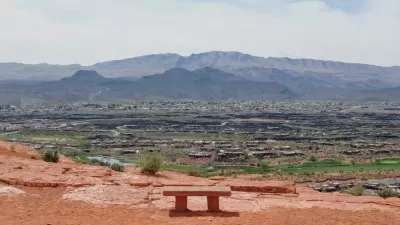Formerly small towns near Boston have experienced high growth rates in recent years. But despite their potential to keep growing, water supplies and aging infrastructure will likely be a limiting factor.
"The region is expected to continue attracting more companies, workers, and residents in the coming years. But that growth is also projected to slam up against water-related limits unless supplies are conserved or increased, said officials. The problem is already in sight, some say."
"In the region stretching along I-495 from Littleton to Wrentham, demand on public water systems is expected to rise from 51 million gallons a day in 2005, the latest numbers available, to 62 million in 2030, according to a recent study published by the 495/MetroWest Corridor Partnership and the Metropolitan Area Planning Council. Steady growth for the I-495 region is driving demand, the study said."
"Municipal water systems won't be able to keep up if they don't evolve, according to Paul Matthews, executive director of the 495/MetroWest business group. 'Those towns over 20 years ago were either rural or much smaller,' he said. 'Now a lot of them are bumping up against their infrastructure.'"
"Of the 32 towns in the study, nine experienced median water-usage increases of 10 percent over the past decade. Seventeen towns in the study decreased their water usage by a similar percentage, often because they conserved to stay within state limits while handling increased demand. In six towns, figures were unavailable because residents use private wells."
FULL STORY: High and dry

Maui's Vacation Rental Debate Turns Ugly
Verbal attacks, misinformation campaigns and fistfights plague a high-stakes debate to convert thousands of vacation rentals into long-term housing.

Planetizen Federal Action Tracker
A weekly monitor of how Trump’s orders and actions are impacting planners and planning in America.

San Francisco Suspends Traffic Calming Amidst Record Deaths
Citing “a challenging fiscal landscape,” the city will cease the program on the heels of 42 traffic deaths, including 24 pedestrians.

Defunct Pittsburgh Power Plant to Become Residential Tower
A decommissioned steam heat plant will be redeveloped into almost 100 affordable housing units.

Trump Prompts Restructuring of Transportation Research Board in “Unprecedented Overreach”
The TRB has eliminated more than half of its committees including those focused on climate, equity, and cities.

Amtrak Rolls Out New Orleans to Alabama “Mardi Gras” Train
The new service will operate morning and evening departures between Mobile and New Orleans.
Urban Design for Planners 1: Software Tools
This six-course series explores essential urban design concepts using open source software and equips planners with the tools they need to participate fully in the urban design process.
Planning for Universal Design
Learn the tools for implementing Universal Design in planning regulations.
Heyer Gruel & Associates PA
JM Goldson LLC
Custer County Colorado
City of Camden Redevelopment Agency
City of Astoria
Transportation Research & Education Center (TREC) at Portland State University
Jefferson Parish Government
Camden Redevelopment Agency
City of Claremont





























